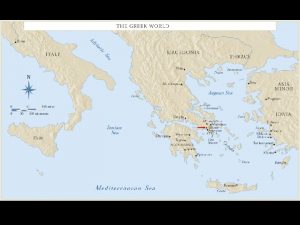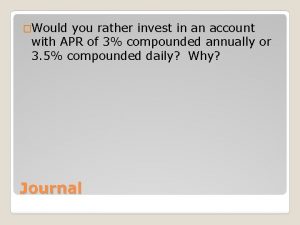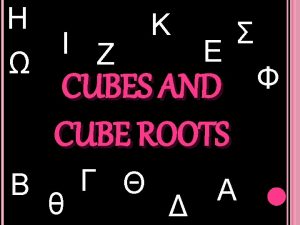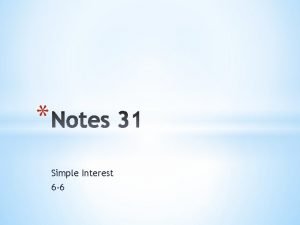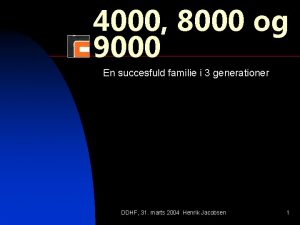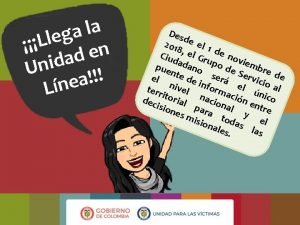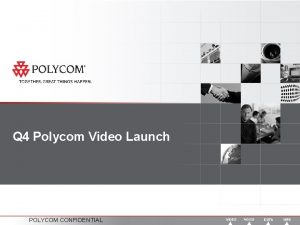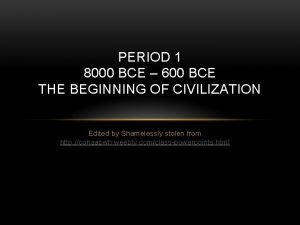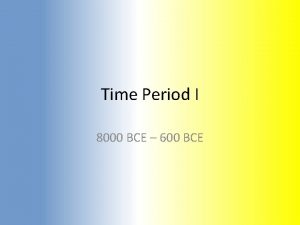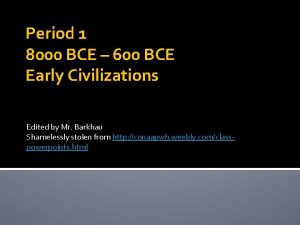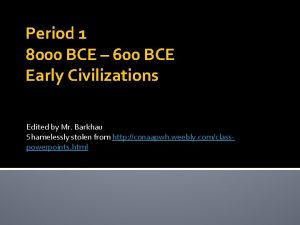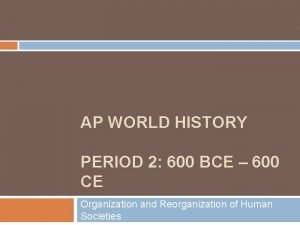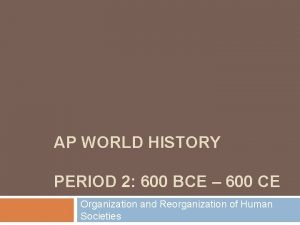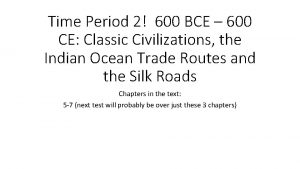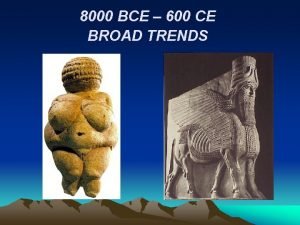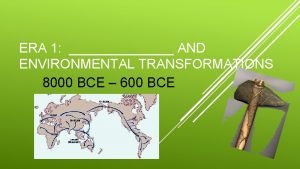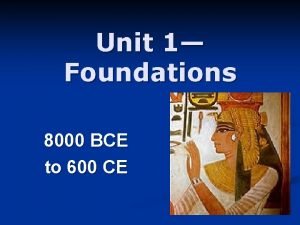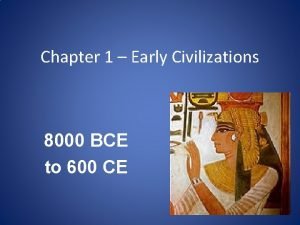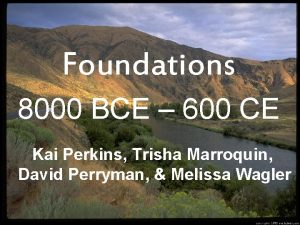PERIOD 1 8000 BCE 600 BCE THE BEGINNING

PERIOD 1 8000 BCE – 600 BCE THE BEGINNING OF CIVILIZATION Edited by Mr. Barkhau Shamelessly stolen from http: //conaapwh. weebly. com/classpowerpoints. html

DISCOVERY OF EARLY AMERICANS IMPORTANT TERMS TO KNOW: • Prehistory = period of time before people developed writing • Hominids = human beings and the humanlike creatures that preceded them • Anthropology = the scientific study of hominids (physical features, development, behavior, etc. ) • Paleontologist = study fossil remains • Archaeologists = unearth and interpret

DATING EARLY ARTIFACTS • Radiocarbon dating is used to determine the age of once living things • Scientists also use DNA evidence to understand earlier peoples

PREHISTORIC FINDS IN AFRICA • Aramis = a site in Ethiopia where paleontologist Gen Suwa discovered the oldest human remains ever found (4. 4 million years old) • Hadar = a site farther north where scientists discovered “Lucy” - a woman’s remains from 3. 2 million years ago

HUMAN ORIGINS • First pre-human hominids date back about 4. 4 million years • Called Australopithecus = “southern ape” • About 65 pounds and 4 feet tall • Mostly likely nomads = moving constantly in search of food • No evidence that they used tools

HUMAN ORIGINS • Human hominids are divided into 3 species that arose at different times in prehistory: 1. Homo habilis = person with ability 2. Homo erectus = person who walks upright 3. Homo sapiens = person who thinks *Homo is a Latin word meaning “human”

THE ICE AGES • Between 2 million and 10, 000 years ago, the Earth experienced 4 long periods of cold climate (Ice Ages) • Average temperatures dropped below freezing and glaciers spread from the Poles • Level of the oceans

• Early humans responded by adapting to the cold or moving to warmer places • Early humans also developed other strategies for keeping warm, such as clothing and fire

HUMAN MIGRATION

EARLY HUMAN CULTURE • Culture = a way of life that includes language, religion, eating habits, clothing, arts, etc. • Humans began making tools (began with sticks and stones) • Improved their way of life through technology = skills and knowledge available

EARLY HUMAN CULTURE • Began making more specialized tools • The use of stone tools led to the term “Stone Age” • Divided into 3 periods: 1) Paleolithic = Old Stone Age 2) Mesolithic = Middle Stone Age 3) Neolithic = New Stone Age

GATHERERS (HOMO HABILIS & HOMO ERECTUS) • Not much is known about their culture • Homo habilis (2. 5 to 1. 5 million years ago) = oldest hominid known to create tools • Homo erectus (1. 8 million to 30, 000 years ago) = more is known about this species • First appeared in Africa then migrated to parts of Europe and Asia • Learned how to make fire • Lived in caves • Mostly food gatherers • Made clothing • Used grunts and gestures for communication

PALEOLITHIC HUNTERGATHERERS • But by 50, 000 years ago, prehistoric people developed language • This achievement allowed them to work with one another and pass knowledge down to the next generation

THE APPEARANCE OF HOMO SAPIENS • First Homo sapiens = the Neanderthals • Evidence of the first Homo sapiens = 200, 000 years ago • Named after the Neander Valley in Germany where they were discovered • Stood about 5. 5 feet tall with very stocky bodies • Slightly larger brains • Nomadic hunter-gatherers

THE NEANDERTHALS • Made better tools -- knives, spear points • Lived in groups of 35 -50 people • Shelters build out of branches & animal skin -- used caves in colder climates • Practiced medicine • Believed in life after death -covered bodies of the dead with flowers in shallow graves with food, tools, and weapons

HOMO SAPIENS = MODERN HUMANS • Originated in Africa about 50, 000 years ago • Dominated the Neanderthals and maybe even Homo erectus • Earliest Homo sapiens were called Cro-Magnons • Taller but less stocky than Neanderthals

CRO-MAGNONS BETTER TECHNOLOGY • Thinner and sharper blades • Hammers, hoes, fishhooks, needles • Axe - chopped down trees for canoes • Could now travel rivers and seacoasts

CRO-MAGNONS BETTER TECHNOLOGY • Spear-thrower & bow and arrow • Allowed them to hunt larger animals and more at a time • This meant there was more food and more people • By 15, 000 BCE = 2 million people in the world • Groups joined together for big hunts • Resulted in establishment of rules and leaders

CRO-MAGNONS • More permanent homes • Created cave paintings (found in France) and sculptures

THE NEOLITHIC (AGRICULTURAL) REVOLUTION • Humans began producing food • Tamed & domesticated animals for their use (dogs, goats, etc. ) • Sickle invented for cutting grains; pottery used as containers • Crops grown • People began settling into communities • Earliest villages = Jericho

AGRICULTURAL REVOLUTION • Invented plow and trained oxen to pull it • Used fertilizer • Invented the loom (to make cloth) • Invented the wheel, bricks, calendars • Warfare began as people competed for land water • Believed in gods and

CIVILIZATION?

WESTERN VIEW • Food producing with surplus • Increase in population • Specialization of labor • Social hierarchy • Growth of trade • Centralization of religious/political authority • Monumental buildings • Written Records • Technical innovation – the arts

WORLD VIEW • Broader view • Stresses the importance of human creativity • Interaction of human beings in creative manner • Cultural and material build

SO WHAT IS CIVILIZATION? • Food Surplus • Advanced Cities • Advanced Technology • Skilled Workers • Complex Institutions – Government/Religion • System of Writing/Record Keeping

HOW DO CIVILIZATIONS CHANGE? • Connection/diffusion – due to interacts vs. inventing something new or using it in a new way • Diffusion – ironworking – Assyrians to Kushites • Invention – Nok people of Nigeria – smelting iron

• Farming of certain crops • Diffusion – Middle East, India, Europe, Nile • Invention – sub-Saharan Africa, Southeast Asia, China, Americas • After emergence, diffusion takes over – exchange of techniques, seeds, crops

RIVER VALLEY CIVILIZATIONS • Earliest civilizations were in river valleys 1) Nile River in northeastern Africa 2) Tigris & Euphrates rivers in Middle East 3) Indus River in India 4) Huang He in China • Men & women did specific jobs • There was a form of government

THE FOUR OLD-WORLD RIVER VALLEY CULTURES

THE ECONOMY OF A CIVILIZATION • Economy = the way people use the environment to meet their material needs • Economy of early civilizations depended on farmers growing surplus food • Built irrigation systems for crops (dug ditches & canals) • Let farmers grow more food because they didn’t have to wait for rain

THE ECONOMY OF A CIVILIZATION • Artisans (workers skilled in a craft) became more productive & creative • Metalworkers created bronze, a very strong metal • Started to trade over long distances • Led to cultural diffusion = the exchange of goods, ideas, and customs between different cultures

THE RISE OF CITIES • Government officials oversaw the collection & distribution of crops • Professional soldiers were hired to guard the territory & trade routes • Led by a king • Developed a writing system • Was first invented by priests as a way of recording religious gifts • Later, used to record battle victories and laws

SYSTEMS OF VALUES • Priests recorded myths • Explained how the world was formed • Told of how people came into being • Sumerians (ancient people from Mesopotamia) wrote their myths on 7 clay tablets
- Slides: 33

